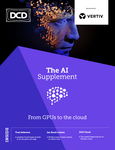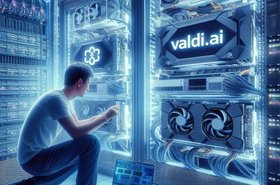Underneath the bonnet of our digital lives hums an unseen engine: data centers. They collect and process the lifeblood of our online world, from the social connections we foster and the financial transactions that power our economies to the music and films we stream.
However, this persistently humming mechanism carries a significant price tag.
As we venture deeper into the artificial intelligence (AI) age, the role of data centers becomes even more vital.
The rapid growth of this technology demands ever-increasing storage capabilities and computational power with generative AI potentially requiring up to 33 times more energy than conventional software.
The UK AI market, currently valued at over £16.8 billion ($22.14bn), is expected to surge to £801.6bn ($1.05 trillion) by 2035, stressing the serious need for sustainable solutions.
While data centers have historically focused on tackling energy efficiency with advancements in server technology, renewable energy, and cooling, the increasing demand for water to cool these facilities poses a new threat.
The double burden
Data centers are known for their substantial energy use, and although efficiency gains have been made, the relentless growth of AI is pushing consumption to unforeseen heights.
Beyond energy, data centers are now also grappling with excessive water usage.
The escalating demands of data processing and AI require robust cooling systems, which in turn require higher water usage.
This dual challenge of energy and water consumption presents a substantial sustainability barrier for the industry to navigate.
Leaning into change
One innovative solution is the adoption of liquid cooling technologies. These systems use closed-loop mechanisms that drastically reduce water usage and allow heat reuse.
By circulating a coolant liquid through server components, these systems efficiently absorb and dissipate heat, conserving water and improving cooling effectiveness.
In regions with suitable climates, air-cooled systems offer a more sustainable alternative. These systems use ambient air to cool data centers, reducing the reliance on water-based cooling.
Combining air cooling with advanced air filtration techniques can further enhance sustainability by cutting down water use and keeping temperatures within optimal ranges.
Alternatively, existing water-based cooling systems can be improved by water recycling and reducing the amount of water that evaporates. This allows data centers in drought-prone areas to reuse water within their cooling cycle and minimize water loss. This approach conserves water and helps the data center remain efficient and operational even during water shortages.
As we move forward, strategically locating new data centers in regions with abundant water resources or cooler climates, and migrating existing ones to such regions, should be a top priority.
Redefining sustainability in the AI-era
Undeniably, innovative solutions are crucial, but the inevitable surge in AI adoption necessitates a paradigm shift. That’s why the focus can no longer be on simply lowering the number of kWh or liters of water used. Instead, these resources must be used as efficiently and effectively as possible, ensuring every bit contributes to maximizing performance and sustainability.
To address this challenge, managing modern data centers also requires sophisticated tools for real-time monitoring and optimization.
Data enmeshing, which involves integrating data from various sources, such as power consumption, cooling efficiency, and environmental conditions, provides a comprehensive view of operations.
This approach helps spot inefficiencies, such as overworked cooling systems and can make targeted improvements. For example, detailed power usage effectiveness (PUE) reports can identify outdated servers that need replacing with more energy-efficient models.
Improving environmental efficiencies
Proper capacity planning is another critical aspect of efficient data center management. It involves predicting future data center needs and making sure that the infrastructure can handle increased loads without over-provisioning resources. This helps prevent wasted energy and resources on underutilized servers and systems, while also enabling data centers to scale to meet growing demands.
Server virtualization is also essential for fine-tuning resource use. By running multiple virtual servers on a single physical server, data centers can significantly reduce the number of physical servers needed. This not only cuts down on energy consumption and cooling requirements but also maximizes the use of available hardware.
Beyond these foundational steps, several other strategies can prioritize sustainability. Shifting to renewable energy sources, such as partnering with companies that generate renewable electricity or investing in on-site solar panels, reduces the reliance on fossil fuels and minimizes the environmental impact.
Sustainable design practices, including modular construction and the use of eco-friendly materials, also support long-term sustainability. Modular construction allows for phased expansion, making each new addition as energy-efficient as possible. Lastly, it goes without saying that using eco-friendly materials reduces the overall carbon footprint of the data center, provided they are sourced in a responsible way.
Pioneering a sustainable future with AI
Looking to the future, the relationship between data center sustainability and AI will appear as a double-edged sword.
It will offer the industry a compelling challenge to decipher and a plethora of never-before-seen opportunities to unlock.
Yes, AI’s unquenchable thirst for computational power can drive up water and energy consumption. But it also offers the chance to redefine resource management throughout the data center industry.
It’s wrong to perceive AI as simply a threat to data center sustainability. Instead, it can be a powerful ally.
By responsibly implementing AI capabilities, the industry can set itself on a new sustainable trajectory.








